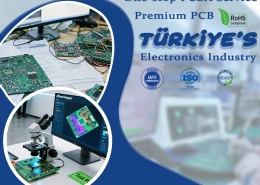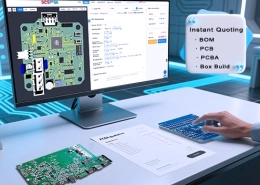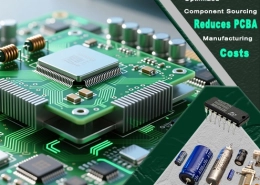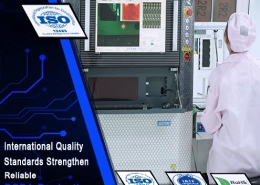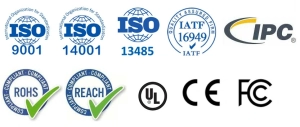Boost PCB Soldering Quality with Nitrogen Reflow Oven in SMT Assembly
The reflow process is widely used in the surface mount technology soldering stage in printed circuit board assembly manufacturing. As one of the core links in the entire SMT process, reflow’s stability and soldering quality directly determine the yield and reliability of the entire printed circuit board production. The use of a nitrogen reflow oven for automotive PCB assembly, medical electronics, and other high-end applications has become essential to improve solder joint reliability with nitrogen and reduce oxidation risks in modern SMT assembly.
What’s Nitrogen Reflow Soldering?
In the electronic manufacturing process, reflow soldering is a key process that melts solder paste through a controlled temperature curve to firmly connect surface mount components (SMT components) to circuit board pads. However, in the traditional reflow soldering environment, oxygen in the air is very easy to contact with solder to form an oxide layer, which in turn causes problems such as black solder joints and loose soldering, reducing product consistency and reliability.
To meet this challenge, PCB board manufacturers have introduced nitrogen protection reflow soldering technology. In this process, the entire heating area is filled with high-purity nitrogen, which greatly reduces the oxygen concentration and effectively inhibits the occurrence of solder oxidation reactions. As an inert gas, nitrogen does not participate in chemical reactions and can provide a purer and more stable environment for the welding process.
The application of nitrogen not only helps to improve the wettability and finish of solder joints, but also significantly reduces the volatilization and decomposition of flux, and improves the overall controllability of welding.
Nitrogen reflow ovens are widely adopted in high-quality SMT soldering solutions across automotive electronics, medical PCB assembly, and industrial control systems, where defect-free solder joints are critical.
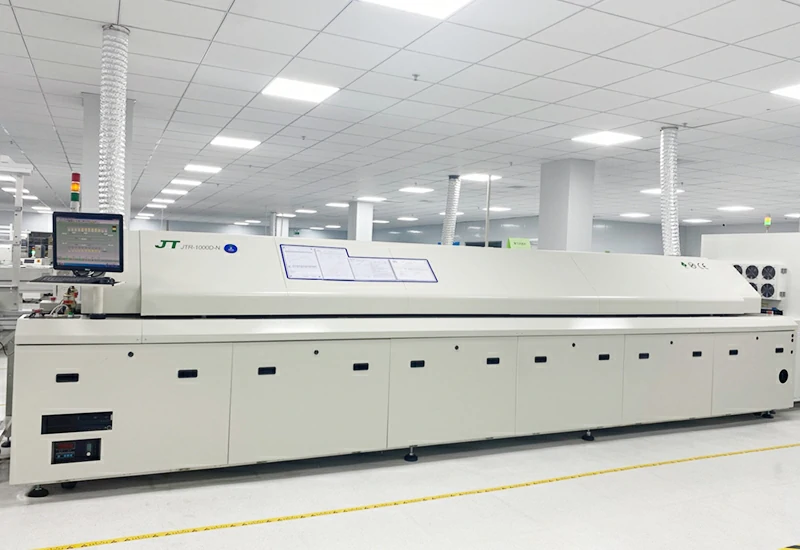
Why Use Nitrogen in SMT Reflow Process?
1. Improve Solder Joint Reliability
Nitrogen has good anti-oxidation properties, which can effectively reduce the consumption of flux, reduce the risk of solder ball splashing and bridging, and make the solder joints brighter, fuller and more reliable, especially suitable for welding fine-pitch devices (such as QFN, BGA, CSP, etc.).
2. Reduce Defects Like Bridging and Voids
SMT reflow process in a nitrogen environment can reduce defects such as tin beads, cold solder joints, and false solder joints, further improve the soldering yield of PCB board production, and reduce the cost of post-rework.
3. Enhance Lead-Free Soldering Performance
Lead-free solder joints are easy to oxidize, have a high melting point, and have more stringent requirements on the welding environment. Nitrogen reflow ovens provide better protection and ensure welding stability during RoHS lead-free soldering processes.
Applications Across Different PCB Types
During the printed circuit board assembly process, different types of PCBs have significantly different requirements for the welding environment. Nitrogen reflow oven, with its low oxygen and stable heating atmosphere, has become an important tool to improve welding quality and meet high-end assembly needs.
1. Nitrogen Reflow for Double-layer PCB
The structure is relatively simple, but there may still be problems with tin bead splashing or welding offset in high-density SMT. Using nitrogen reflow can effectively improve the melting and wetting process of solder paste, reduce defects such as cold solder joints and bridging, and improve the overall assembly yield.
Double-Layer circuit PCB board is widely used in consumer electronics, smart homes and other products that require both cost and stability.
2. Multilayer and HDI PCB Assembly Benefits
For circuit boards with more than 8 layers used in GPU motherboards, communication servers or industrial control equipment, the role of nitrogen reflow oven is more significant.
The internal lamination structure of multilayer boards is complex, the pad density is high, and the BGA or QFN package spacing is small. Any oxidation of solder joints will affect the consistency of electrical connections. By welding in an inert gas atmosphere, the generation of oxide layers can be significantly reduced, ensuring the wettability and morphology of solder joints, which is particularly suitable for high-density interconnect (HDI) assembly electronics.
3. Rigid-Flex PCB: Thermal Shock Protection
The combination of flexible and rigid materials is used in high-end electronic devices such as folding mobile phones, wearable devices, and drone power modules. Because the flexible area is extremely sensitive to thermal stress, traditional air reflow ovens are prone to PI material delamination or cracking. The temperature control during nitrogen welding is more uniform, effectively preventing thermal shock and helping to maintain the integrity of flexible circuits.
4. High-Frequency PCB: Preserve Signal Integrity
High frequency PCB board fabrication is extremely sensitive to the welding process, especially worried about high temperature causing the dielectric constant of the material to change or surface carbonization, affecting signal integrity. Nitrogen environment effectively isolates oxygen, avoids surface ablation of high frequency materials, ensures the accuracy of impedance control, and helps achieve stable high-speed signal transmission. It is widely used in 5G communication boards, millimeter wave radar control boards, etc. with high-frequency dielectric materials such as PTFE and Rogers.
5. Aluminum PCB: Improve Large Pad Wetting
Aluminum PCB has excellent thermal conductivity, but the pad area is large and the heat capacity is high, and the solder wetting is often insufficient. Under nitrogen protection, the flux evaporates more gently and the solder joints are more complete, thereby improving the consistency of large area pad welding and reducing voids and open welding. It is used in high-power LED lighting, automotive headlights, power modules and other products.
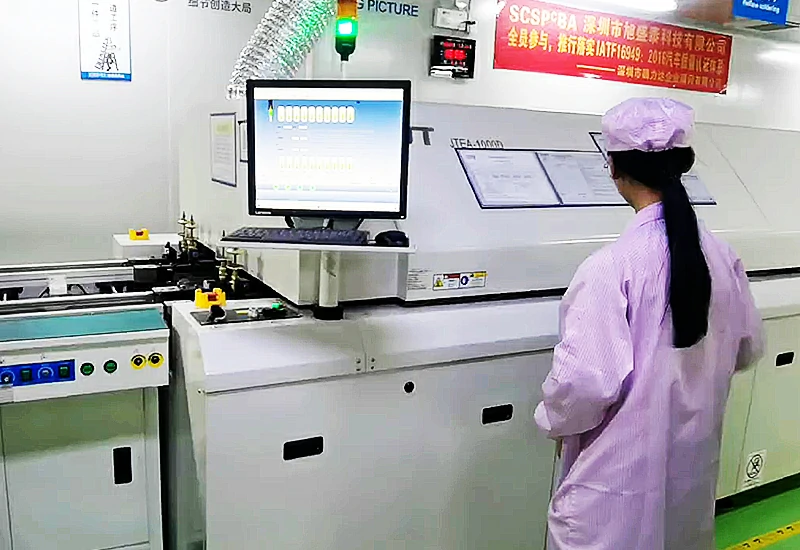
Typical Use Cases in High-Reliability Industries
1. Automotive Electronics Manufacturing
Automotive control units (ECUs), ADAS systems, etc. have extremely high requirements for solder joint reliability. Using a nitrogen reflow oven can ensure the stability of solder joints under long-term high temperature and high vibration, and improve the safety of automotive pcb assembly.
2. Medical Electronic Equipment
Medical electronics such as ECG monitors, smart wearable medical devices, etc. have strict requirements on the reliability and safety of printing circuit boards. Nitrogen welding can effectively reduce the risk of solder joint voids and bubbles.
3. 5G and Communication Equipment
The multi-layer PCB boards of high-speed network communication equipment have a compact layout and high heat dissipation requirements. Nitrogen reflow ovens can complete the welding of high-end devices such as BGA under precise temperature control and inert atmosphere.
4. Others
Applicable to high-precision and ultra-high requirements in semiconductors, aerospace, industrial control, electronics, 5G communications, LEDs and other fields
Equipment Configuration and Process Characteristics
A standard nitrogen reflow oven is usually equipped with:
- Multi-zone independent temperature control (commonly 8 or 10 zones)
- Nitrogen concentration automatic detection and adjustment system
- Gas energy-saving recovery device
- Precision temperature curve programming and real-time monitoring
In the printed circuit board assembly process, SPI detection (solder paste thickness), SMT placement stage, AOI detection and other steps are usually carried out before reflow soldering. Reflow soldering is the “stereotype” link to ensure the stability and reliability of the entire patch. The use of nitrogen protection is a plus point to ensure the stability of the solder joints.
Points to Note When Using A Nitrogen Reflow Oven
- Control nitrogen purity and flow rate
It is usually recommended that nitrogen purity be ≥99.99%. Too high or too low flow rate will affect the welding effect.
- Match with a reasonable temperature curve
The temperature zone control should be adjusted according to the thermal sensitivity of different components to prevent overheating or insufficient welding.
- Energy-saving control system configuration
It is recommended to use equipment that supports nitrogen recovery and intelligent gas replenishment to reduce operating costs.
Looking for high-reliability PCB assembly?
Contact us today to explore how nitrogen reflow ovens can improve your product quality and manufacturing efficiency.
Frequently Asked Questions about Nitrogen Reflow Ovens
What’s the best reflow oven for medical electronics?
Nitrogen reflow ovens are ideal due to their low-oxidation environment, ensuring safe and reliable connections for critical medical PCBs.
Why use nitrogen reflow oven for automotive PCBA?
It provides high solder joint reliability even under harsh thermal and vibration conditions in automotive systems.
How does nitrogen improve SMT soldering?
It minimizes oxidation, improves wettability, and ensures high-quality SMT soldering solutions across various PCB types.


